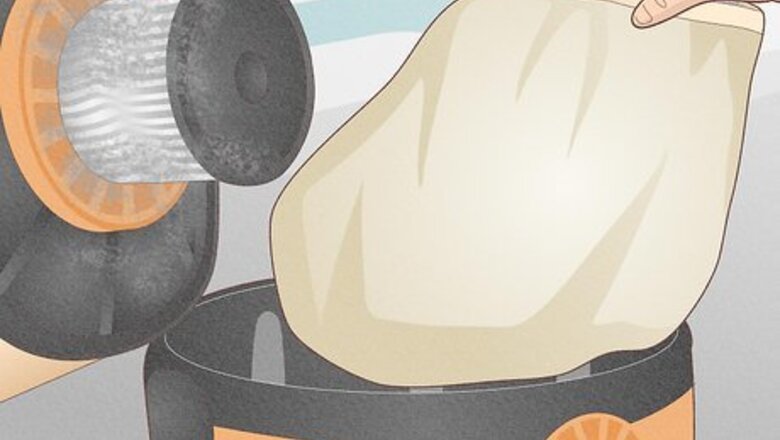
views
Remove the bag.
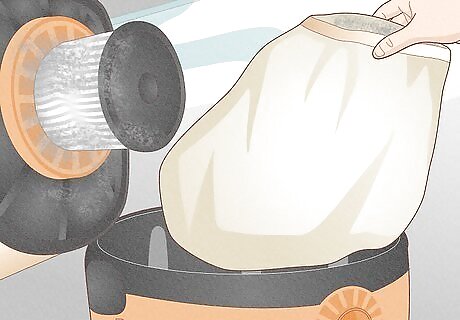
The dry bag collects dust, so take it out before vacuuming water. If your version of Shop Vac uses a bag, it’s only for vacuuming up dust, dirt, and grime. Take the bag out of the main part of the Shop Vac and set it aside so you can put it back in later. The Shop Vac bag isn’t designed to get wet. If you leave the bag in, you’ll have to replace it with a new one when you want to use it for dry messes again. If you have a smaller Shop Vac, your model might not have a bag in it. In that case, you can move onto the next step.
Remove any filters.

Take the filters out of the Shop Vac so they don’t get wet. Shop Vac filters are only for vacuuming up dry areas—if a filter gets wet, it won’t be usable anymore. Take the filter out of the Shop Vac and set it aside to use later. The filters are usually round and fit around the middle portion of the lid.
Attach a foam sleeve to the Shop Vac.

Foam sleeves filter the water that you vacuum up. Think of a foam sleeve as a filter for your wet vac. Slide the foam sleeve onto the underside of the lid, or where a filter would go normally. If you have a small model of the Shop Vac, get a small foam sleeve. If you’re using the 1 gallon Shop Vac, go for a micro foam sleeve.
Attach a wet nozzle.
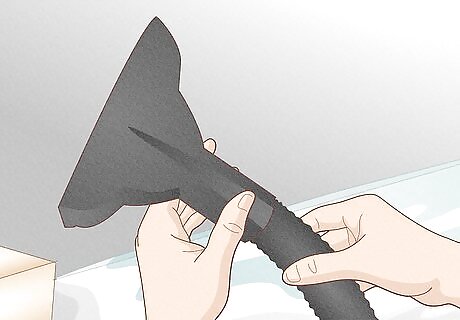
Wet nozzles are made specifically for vacuuming up wet surfaces. If you’re vacuuming water spread over a floor, use a nozzle with a flat head. If you’re vacuuming up a puddle of standing water, use a nozzle with a round head. Most Shop Vacs come with at least a wet nozzle and a round head nozzle. Attach the nozzle by plugging it into the Shop Vac on the very front. While the nozzle with the flat head is technically the “wet nozzle,” any nozzle you have for your Shop Vac will work fine. You can also use a crevice tool for any corners, nooks, or crannies.
Plug the Shop Vac into a GFCI outlet if you have one.
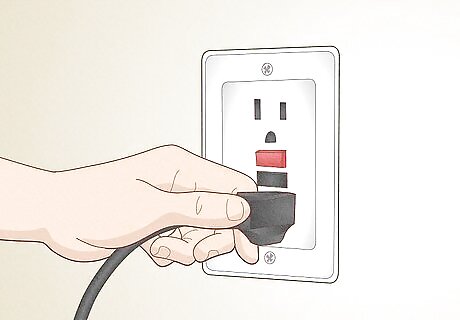
These grounded outlets are better for using electricity around water. Since water and electricity can be a dangerous combination, experts recommend plugging your Shop Vac into a GFCI outlet (the ones with the reset buttons). However, since most Shop Vacs are double-insulated for your protection, this isn’t a requirement. GFCI outlets will automatically shut off if they detect any variation from the normal current of electricity.
Place the nozzle on top of the water.
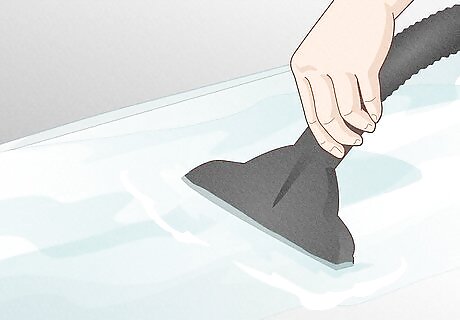
Press the power button to start suctioning up water. For water spread across a floor, hold the nozzle in place on the floor until the water underneath it is gone, then slowly move it to a new section. For large puddles of standing water, hold the nozzle in place just above the water and wait for the canister to fill up. If you’re dealing with wet carpet, place the wet nozzle directly on the carpet and slowly drag it back and forth.
Turn the Shop Vac off when the sound changes.

A high-pitched whine means that your Shop Vac is full. As you vacuum, listen to the sound of the motor on your Shop Vac. Once it changes, turn the Shop Vac off and get ready to empty out the canister. Using the Shop Vac while it’s full can stress the motor, causing it to burn out. Whenever you hear the motor change, stop it right away.
Remove any large pieces of debris before emptying.
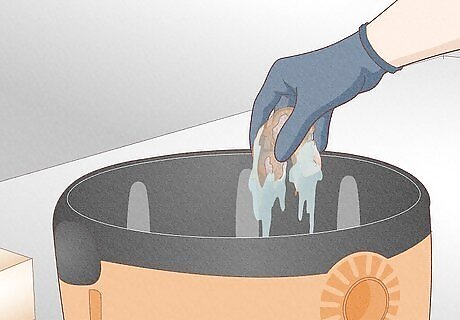
Check your Shop Vac canister for large chunks. Take the lid off of the Shop Vac and shine a light into the canister. If there are any large pieces of debris, put on gloves and fish the debris out before putting it in the trash. Large debris can clog the pump of your Shop Vac.
Pump the water out using a pump attachment.
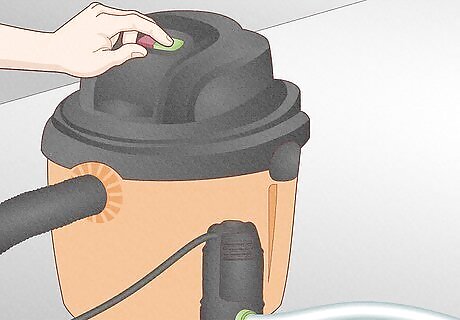
The pump helps remove large quantities of water with little work. Unscrew the tap at the bottom of the Shop Vac, then screw the pump attachment in its place. Attach a garden hose to the pump attachment and direct the hose outside or into a sump pump. Turn the Shop Vac on to automatically pump the water out.
Empty the water manually if you don’t have a pump.
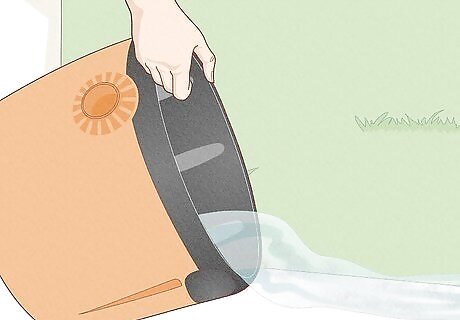
Dump the water out of the Shop Vac by hand if you need to. If you don’t have a pump attachment, simply turn the Shop Vac off, unplug it, and remove the lid. Then, carefully carry the canister outside or toward a sump pump before dumping the water out. Direct the water away from any garden beds or edible gardens. Waste water isn’t great for living plants, and it could damage your landscaping.
Clean the Shop Vac and attachments.
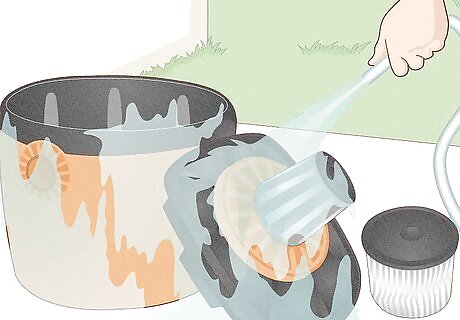
Rinse and clean the Shop Vac to avoid mold and mildew. Rinse the canister, the attachments, and the foam sleeve with fresh water. Set all components out in a well ventilated area to dry completely before you store your Shop Vac. If your Shop Vac is extremely dirty or smells bad, mix 1 US gal (3.8 L) of warm water with ⁄4 cup (59 mL) of bleach, then use your mixture to clean out the canister.

















Comments
0 comment